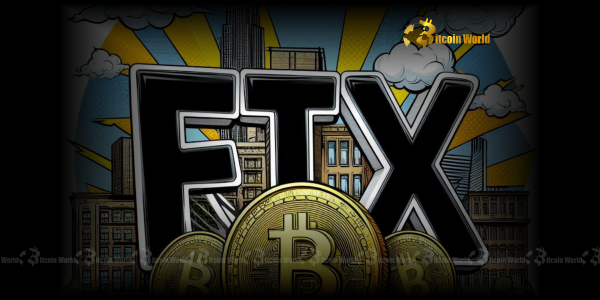FTX Repayments: A Landmark Victory for Crypto Creditors
0
0
BitcoinWorld

FTX Repayments: A Landmark Victory for Crypto Creditors
For thousands of individuals who saw their digital assets vanish overnight with the spectacular collapse of FTX, the past two years have been a period of profound uncertainty and despair. But now, a beacon of hope has emerged from the ashes. In a move that has sent ripples of relief across the cryptocurrency community, FTX has officially begun the process of repaying its creditors, marking a significant milestone in the tumultuous saga of one of crypto’s largest bankruptcies. This is not just a payout; it’s a testament to the resilience of the legal process and a surprising turn of events that promises a substantial return for many.
FTX Repayments Begin: A Beacon of Hope for Affected Users
The news, initially shared by FTX creditor representative Sunil Kavuri on X, confirmed what many had been anxiously awaiting: the defunct exchange has indeed commenced the distribution of funds to its former users. This initial phase of FTX repayments is structured to provide immediate relief, especially to those with smaller claims, while outlining a clear path for larger claimants.
- Small Claims First: Creditors with claims under $50,000 have already seen their accounts credited with a remarkable 120% of their claim value, with these payouts completed as early as February 18. This over-the-top return is a rare occurrence in bankruptcy proceedings and offers a pleasant surprise for those who likely expected only a fraction of their original holdings.
- Initial Payouts for Larger Claims: For individuals and entities holding claims over $50,000, an initial payout of 72.5% was processed on May 30. This substantial first distribution provides significant liquidity and confidence, setting the stage for future recoveries.
The commencement of these distributions is a critical step, validating the extensive efforts of the FTX Debtors and legal teams involved in the complex process of asset recovery. It signifies that the long and arduous journey towards recompense is finally bearing fruit, offering tangible hope where once there was only desolation.
Understanding the FTX Claims Process: How Did We Get Here?
To truly appreciate the significance of these payouts, it’s essential to understand the backdrop against which they are occurring. FTX, once a titan in the crypto exchange world, imploded in November 2022, leaving millions of users and investors in limbo. The ensuing bankruptcy proceedings under Chapter 11 in the U.S. marked the beginning of a monumental task: locating, securing, and liquidating assets to satisfy the multitude of FTX claims. The process has been anything but straightforward, involving international legal battles, the tracing of commingled funds, and the navigation of a highly volatile digital asset market.
The success in reaching this repayment stage is largely attributed to:
- Dedicated Legal and Financial Teams: A new management team, led by CEO John Ray III (known for his work on Enron’s bankruptcy), meticulously worked to untangle the financial mess left by the previous administration.
- Aggressive Asset Recovery: The debtors pursued every avenue to recover funds, from seizing bank accounts to liquidating illiquid investments.
- Strategic Asset Management: Crucially, the estate held significant amounts of Solana (SOL) tokens, which experienced a massive price surge during the recovery period. This appreciation of seized assets played a pivotal role in boosting the overall value available for distribution.
This painstaking process, often slow and opaque to the public, has now culminated in a tangible outcome, offering a rare glimpse of successful digital asset recovery on a massive scale.
Digital Asset Recovery: The Unprecedented 120% Return Explained
The headline-grabbing 120% return for smaller claims raises an important question: how is it possible for a bankrupt entity to pay back more than what was owed? The answer lies in the strategic management and appreciation of the seized assets, particularly Solana (SOL) tokens.
When FTX collapsed, its assets were valued based on their prices at the time of bankruptcy filing. However, the estate held a substantial portfolio of cryptocurrencies, most notably SOL. Since the bankruptcy filing, the price of SOL, along with other digital assets, experienced a significant recovery and surge. The FTX estate wisely held onto these assets, liquidating them over time as market conditions improved. This appreciation meant that by the time of distribution, the dollar value of the recovered assets significantly exceeded the dollar value of the claims at the time of bankruptcy.
This situation highlights a unique aspect of crypto bankruptcies compared to traditional ones. While fiat currency holdings typically depreciate or remain static in value during a bankruptcy, digital assets can fluctuate wildly, sometimes leading to unexpected windfalls for creditors. It’s a testament to the volatile yet potentially rewarding nature of the crypto market, even in the context of insolvency.
What’s Next for Crypto Creditors? Navigating Future Distributions
While the initial payouts bring immense relief, the journey for crypto creditors is not entirely over. The FTX Debtors have outlined a multi-round distribution plan, with additional payouts expected between 2026 and 2027. This staggered approach aims to manage the remaining assets and ensure a fair and orderly distribution process.
For those with larger claims, the remaining 27.5% of their principal is still pending. Furthermore, a highly anticipated component of the future distributions is the potential for post-petition interest, ranging from 40% to 80%. This interest would be calculated on the value of the claims from the date of the bankruptcy filing until the date of repayment, further boosting the total recovery for many.
Key Takeaways for Creditors:
- Stay Informed: Regularly check official FTX Debtors’ communications channels and the claims portal for updates.
- Beware of Scams: The repayment process is a prime target for fraudsters. Only trust information from official FTX sources. Never share your private keys or personal financial details in response to unsolicited requests.
- Patience is Key: While the initial payments are encouraging, the full recovery process will span several more years.
Beyond FTX: The Future of Crypto Bankruptcy Relief
The successful crypto bankruptcy relief efforts at FTX set a precedent for the nascent digital asset industry. Historically, when crypto exchanges or platforms collapsed, users often faced near-total losses. The FTX case demonstrates that with diligent legal work, strategic asset management, and a bit of market luck, significant recovery is possible. This outcome could instill greater confidence among investors, knowing that even in the event of a platform’s failure, there’s a mechanism for potential redress.
Comparing FTX’s recovery to other recent crypto bankruptcies, such as Celsius or BlockFi, highlights its unique success. While Celsius and BlockFi have also made strides in returning funds, the scale and the unprecedented 120% return for a segment of FTX creditors make this case stand out. It provides valuable lessons for regulators, legal professionals, and the crypto industry as a whole on how to manage insolvencies in a complex, rapidly evolving digital landscape.
Challenges and Lingering Questions
Despite the positive developments, the FTX repayment process hasn’t been without its challenges. The long wait has taken an emotional toll on many, and the initial valuation date of claims (based on prices at the time of bankruptcy) has been a point of contention for some who feel their assets should be valued at current market rates. However, the legal framework often dictates such valuations, and the 120% return mitigates much of this concern for smaller claimants.
Another challenge is the sheer complexity of managing such a vast estate with a global creditor base. Ensuring accurate and timely distributions to thousands of individuals across different jurisdictions requires robust systems and constant vigilance against fraud.
Actionable Steps for FTX Creditors
If you are an FTX creditor, here are some actionable steps to ensure you receive your due:
- Verify Your Claim: Ensure your claim details are accurate and up-to-date on the official FTX Debtors’ portal.
- Monitor Official Communications: Only rely on information from the official FTX Debtors’ website and authorized representatives.
- Prepare for Future Distributions: Understand the timeline for the remaining payouts and potential interest.
- Consult Professionals: For complex cases or tax implications, consider seeking advice from legal or financial professionals.
The journey from the despair of FTX’s collapse to the commencement of repayments has been a long and winding one. However, the recent distributions mark a triumphant moment, not just for the thousands of affected individuals who are finally seeing their assets returned, but for the broader cryptocurrency ecosystem. It demonstrates that even in the face of catastrophic failure, meticulous legal processes and strategic asset management can lead to significant digital asset recovery. This landmark achievement provides a much-needed boost of confidence and sets a powerful precedent for how future crypto bankruptcies might be handled, offering a glimmer of hope for a more resilient and accountable industry.
To learn more about the latest crypto market trends, explore our article on key developments shaping digital asset recovery and institutional adoption.
This post FTX Repayments: A Landmark Victory for Crypto Creditors first appeared on BitcoinWorld and is written by Editorial Team
0
0
 Manage all your crypto, NFT and DeFi from one place
Manage all your crypto, NFT and DeFi from one placeSecurely connect the portfolio you’re using to start.





